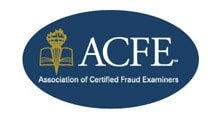| Case type: | Fraud and breach of fiduciary duty |
| Attorney: | Terry D. Avchen |
| Law Firm: | Christensen, Miller, Fink, Jacobs, Glaser, Weil & Shapiro |
| Venue: | California Superior Court, Los Angeles County |
| Side: | Plaintiff |
| Trier of fact: | Jury |
| Testimony Issue: | Lost investment value |
| Testimony Date: | 1989 |
| Case Summary: | An investment adviser persuaded a well-known actor to invest in four different tax shelter programs. The IRS disallowed the actor’s investments and assessed substantial penalties. The actor sued the investment adviser to recover his losses. |
| Testimony summary: | The investment programs were limited partnerships involving a horse breeding ranch in Kentucky, a coal mine in Illinois, a motion picture distribution deal in California and a condominium complex in Bermuda. The central issue was whether the advisor should have known the programs were abusive tax shelters the IRS would disallow. Mr. Neches testified that the four investment programs were sham transactions lacking economic reality or viability when viewed in their entirety. This is the fundamental characteristic the IRS uses as the basis to disallow abusive tax shelters. Mr. Neches testified also that if the investment advisor had performed reasonable due diligence, he would have known the shelters would likely be disallowed. To determine whether the programs were abusive, Mr. Neches performed financial analyses that focused on each program’s ability to generate a profit. The analyses showed that, even accepting the optimistic assumptions in each program’s promotional materials, the programs could not have returned the capital invested, let alone show a profit. Further, the investors did not assume the burdens and benefits of ownership. The analyses performed were similar to due diligence procedures an investment advisor would be expected to conduct. Mr. Neches reviewed the promotional materials associated with the programs, including prospectuses, projections, partnership agreements and loan agreements. He developed independent cash flow and income projections and compared the results to those in the prospectuses. Mr. Neches also conducted industry research to assess the viability of each program. For example, the horse breeding program assumed the mares would foal once a year for next ten years. A telephone call to the Stallion Breeding Department of the American Quarterhorse Association determined that this assumption was reasonable. However, a simple analysis showed the program would not generate enough revenue to covered expenses and return the capital invested even if the mares foaled as planned and the colts sold at forecasted selling prices. Mr. Neches testified that if the investment advisor had performed simple due diligence procedures, he would have known the programs were shams. |
| Result: | The jury awarded compensatory and punitive damages totaling $1,275,000. |










IF YOU HAVE ANY QUESTIONS, PLEASE CALL THOMAS NECHES DIRECTLY AT 213.448.7750.
CONTACT US